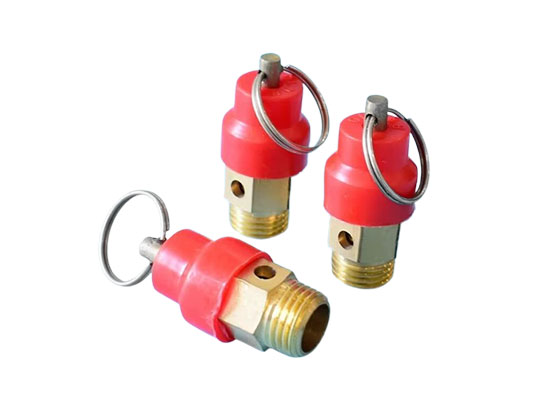
Pneumatic Safety Valve is a safety component designed to ensure the safe operation of pneumatic systems. Traditional safety valves are mechanical and rely on spring force to automatically open and close when the pressure exceeds a preset value. In contrast, pneumatic safety valves focus on active regulation and can be linked to PLC systems for remote control. They are capable of quickly cutting off the air supply and providing pressure relief protection.
A safety valve is a mechanical valve device designed to automatically release pressure when the system pressure exceeds a predetermined limit, thereby preventing potential issues such as equipment damage or explosions. It serves as a passive protection mechanism for the system and is a fundamental component in various industrial applications that involve pressurized systems, such as manufacturing, chemical processing, energy production, and pneumatic automation.
Working principle:
This is the most common type of safety valve, which relies on the elastic force of a spring to keep the valve closed. When the system pressure exceeds the set pressure and the gas pressure is greater than the spring force, the valve will open to release excess pressure; After the pressure returns to normal, the spring pushes the valve to close again.
Application scenarios:
Widely used in equipment such as boilers, air compressors, pipelines, etc. that require medium precision protection.
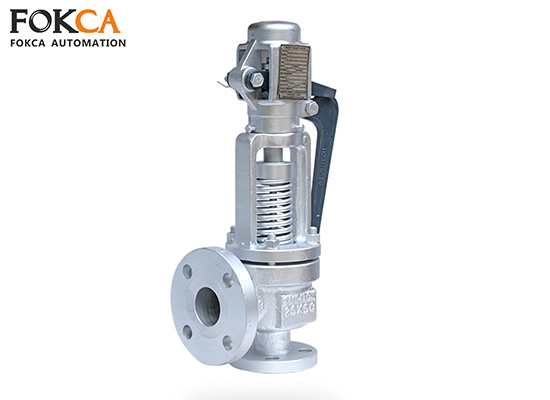
Working principle:
This type of safety valve consists of a small pilot valve and a main valve. Pilot valves are used to monitor system pressure and control the opening of the main valve. When the pressure exceeds the set value, the pilot valve first starts and leads to the main valve to release the pressure. Compared to spring type, pilot type can more accurately control the opening and closing points.
Application scenarios:
Suitable for high-pressure systems that require strong sealing and high pressure accuracy, such as natural gas, petrochemical equipment, etc.
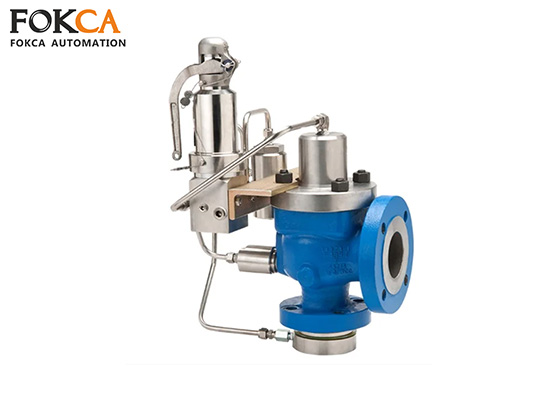
Working principle:
By balancing the gas pressure with a heavy hammer, when the system pressure exceeds the force of the hammer, the valve rises to release the pressure. This type of structure is simple and easy to adjust, but it has a large volume.
Application scenarios:
Mostly used in low-pressure steam systems or some old-fashioned equipment.
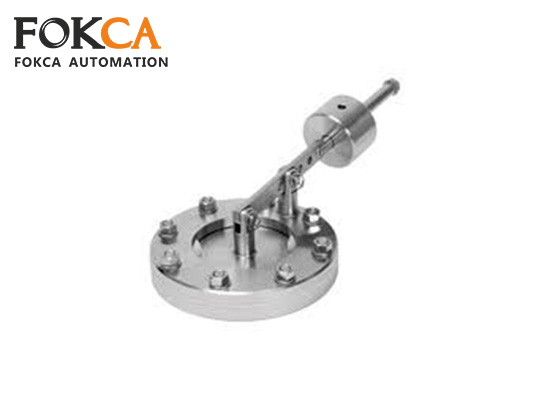
The core function of a safety valve is to release excess pressure when the system pressure exceeds a preset threshold, thereby preventing damage to equipment or harm to personnel. Whether in hydraulic or pneumatic systems, the working principle of a safety valve follows the same basic logic:
Pressure detection → Automatic opening → Pressure release → Automatic closing
Normal State:
When the internal pressure of the system is below the set pressure of the safety valve, the valve core remains closed, held in place by a spring or deadweight.
Pressure Rise:
As the internal pressure increases and exceeds the preset "opening pressure" of the safety valve, the fluid force overcomes the spring or deadweight force, pushing the valve core upward and opening the valve.
Pressure Relief Process:
The high-pressure gas or liquid is discharged through the valve outlet to the atmosphere or an exhaust pipeline, rapidly reducing the system pressure.
Automatic Closing After Pressure Recovery:
Once the system pressure drops back into the safe range, the spring or deadweight returns the valve core to its closed position, and the system resumes normal operation.
Conventional safety valves that rely on passive activation face limitations in meeting increasingly diverse application needs. Pneumatic safety valves, however, upgrade and enhance the automatic opening phase of traditional valves by introducing a pneumatic control system that actively triggers the valve to open, enabling more precise, programmable, and responsive operation—without relying solely on passive pressure buildup.
Normally Closed Type
Normally Open Type
Solenoid-Actuated Type
Proportional-Controlled Type
Quick Exhaust Valve Type
◆ Compressed Air Systems
◆ Pneumatic Actuators
◆ Industrial Packaging Equipment
◆ Automated assembly line
◆ Material handling system
◆ Chemical and pharmaceutical industry
Response Speed: The response speed determines how quickly the safety valve can open when the pressure exceeds the limit.
Rated Pressure: Choose a safety valve with a rated pressure slightly higher than the maximum system pressure to avoid frequent opening and loss, while ensuring safety margin.
Connection Type and Size: Select the appropriate interface type based on the diameter and installation space of the pneumatic system.
Control Method: Choose mechanical spring type, pneumatic control type, electromagnetic drive type.
In terms of installation: attention should be paid to the installation position, installation aspect, and installation method
In terms of debugging: preliminary inspection, stress testing, and control system linkage testing are required
Problem solving: Valve cannot be opened, valve leaks, slow response or misoperation, and other issues.
Pneumatic Safety Valve is an overpressure protection device used in pneumatic systems. When the system pressure exceeds a set threshold, the valve will automatically open, quickly releasing excess gas to prevent equipment damage or personnel danger.
It is equivalent to the 'last line of defense' in pneumatic systems, ensuring that the system pressure is always maintained within a safe range.
Automatic release: When the system pressure exceeds the set value, the valve spring compresses, the valve core opens, and excess air pressure is released
Adjustable pressure setting: allows users to adjust the startup pressure according to system needs
Fast response speed: fast release speed, suitable for situations with instantaneous pressure changes
Prevent equipment damage: prevent pneumatic components (such as cylinders, pipelines) from rupturing, leaking, and other malfunctions caused by overpressure
Reliable reset: automatically closes after releasing pressure, restoring the sealed state
Easy installation: usually using threaded connections, it is easy to install in positions such as gas source regulators, gas tanks, and main gas supply pipelines
Diverse materials: Common materials include stainless steel, brass, and engineering plastics, suitable for different corrosion or cleanliness levels requirements
Pressure Monitoring
Under normal operating conditions, the air pressure in the system stays below the set threshold. The valve remains closed, held shut by a spring mechanism that resists opening unless pressure becomes too high.
Overpressure Condition
When the system pressure exceeds the preset limit, the force of the air pressure overcomes the spring tension, pushing the valve open.
Air is released through the valve outlet.
This reduces the system pressure quickly to a safe level.
Automatic Reset
Once the pressure drops back to a safe range, the spring pushes the valve shut again, sealing the system and preventing further air loss.
Verify the pressure set point to ensure it aligns with the system’s requirements.
Gradually increase the pressure in the system until the valve opens. Ensure that the valve fully opens and releases the pressure as intended.
After the valve releases the pressure, reduce the pressure to see if the valve reseats properly without leaks.
Ensure there is no leakage around the valve seat or other components.
For high-pressure applications, a Pressure air Safety Valve is typically used.
These valves are designed to handle higher pressure levels and open reliably to protect systems from overpressure situations.
They are commonly found in industries like oil and gas, chemical processing, and power plants.
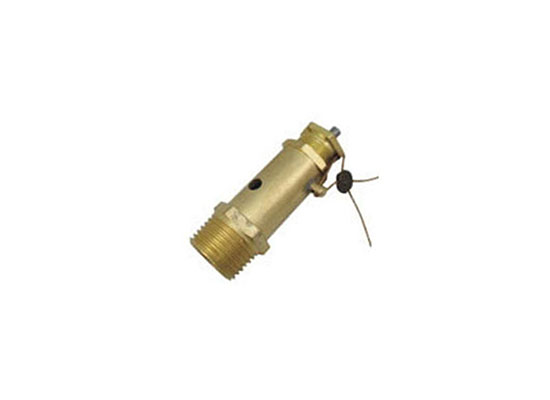
A safety valve for a pressure cooker is a specialized valve designed to release excess pressure if the cooker’s internal pressure exceeds safe limits.
This ensures the cooker does not malfunction or cause a safety hazard, like explosion or spillage. These valves are typically spring-loaded and are built into the lid of the pressure cooker.
Q2.What is the function of a pneumatic safety valve in compressed air systems?
A pneumatic safety valve protects compressed air systems from overpressure by releasing excess air automatically when the pressure exceeds a set limit. It helps prevent equipment damage and ensures operator safety.
As a trusted pneumatic products manufacturer, Fokca also offers customized solutions and expert guidance, helping clients select and install the most suitable pneumatic safety valve for their applications.
With rigorous testing and quality control, Fokcavalve ensures that every safety pneumatic valve meets industry standards and provides reliable protection.
FOKCA ©1998-2025 All Rights Reserved Sitemap